A metric that is not actionable is of no value when it comes to increasing the performance of the business.
If you own an e-commerce store you will always be looking at the bigger picture, the conversion rate.
What about the small but important elements of that picture that you are ignoring or have no idea of?
Maybe your conversion picture could be more beautiful if those elements were better.
So if conversion rate is the picture, the actionable metrics are the elements.
I will talk about those actionable metrics which you should work on to improve your CRO.
- Content vs. Bounce Rate : Get the Right Balance
Way back in 1996 Bills Gates coined the term “Content is King”. It is absolute truth, especially for the present day e-commerce store owners. The e-commerce eco-sphere is fiercely competitive.
Google Panda update in 2011 banished - thin, duplicate, keyword-infested, irrelevant, useless content from search.
Super-quality content will help you beat the Google algorithm update – Panda. It will help you beat your competitors too!
No doubt about that.
Content is voice of your store.
Be it a product page, homepage, landing page or any other page you must have a useful, unique and targeted content.
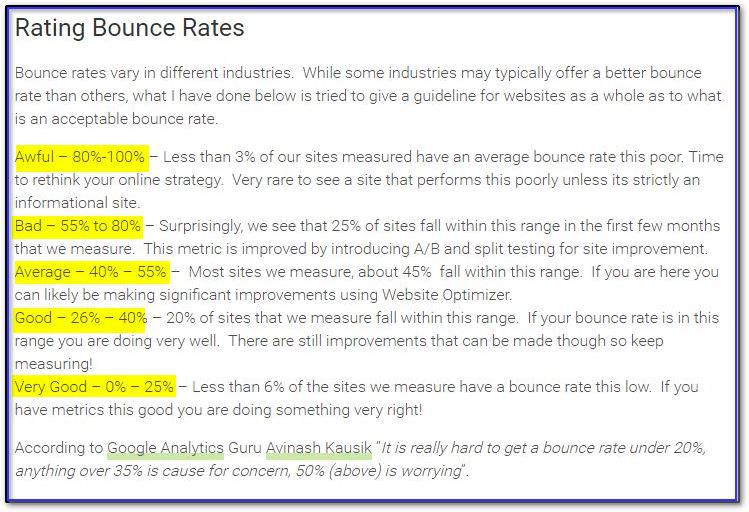
High bounce rate troubles many e-commerce stores. It has direct effect on the conversion rate.
There are many reasons behind high bounce rate; poor content is one of them. The important one.
Problem: The main product pages (revenue generating) are not converting.
Reason: The content is irrelevant and unconvincing, visitors bounce off.
- Rewrite the product description. Make it unique, benefit-driven, feature-rich and targeted for the visitors.
- Add different images (from different angles) and video (if possible). Add shipping details, price and customer reviews on the same page.
- Add more value to them by linking with product manual or guide on how to use the product to achieve a specific result.
- Make the content easy and quick to consume. Prevent users from bookmarking it.
- Link up the product page with other related pages.
Do it the way Amazon does. They excel at it.
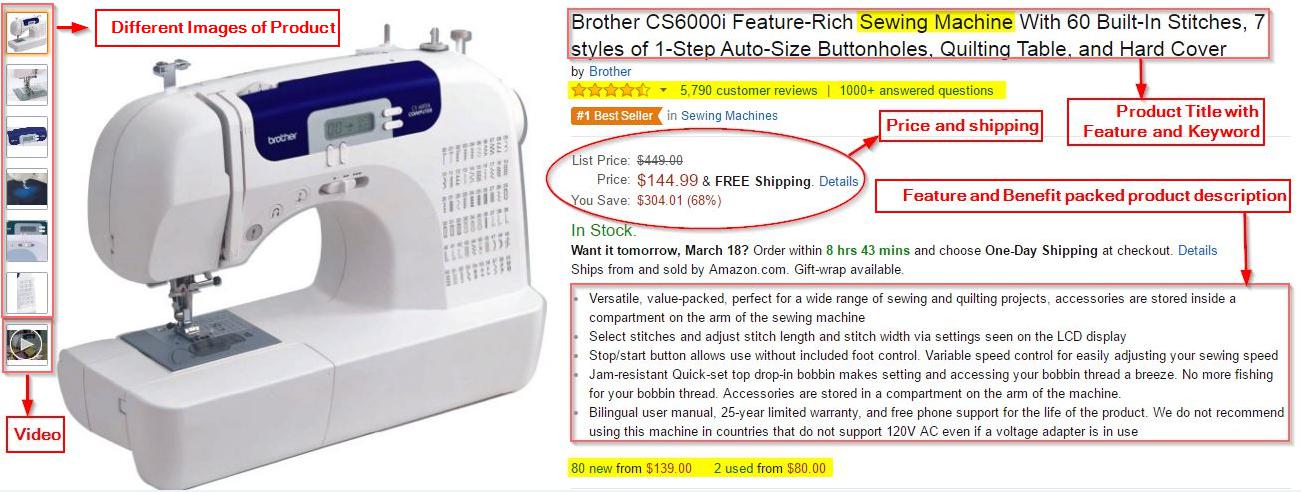


Article load: You can measure how many times the product page (of your e-store) loads in the browser. You can see unique page loading sessions.
Start reading: This session is triggered when a visitor scrolls 150 pixels down the page. You can change that value. See 1266 unique “start reading” sessions in the table.
Content Bottom: You know when the readers reach the end of the page. You know the time it took to scroll down to the bottom of content.
Page Bottom: You know the time when visitors reach the bottom. How long it took to get there.

See in the above screen shot how, when average time on page increased from 4.46 minutes to 53.35 minutes the bounce rate fell from 80% to 16 %.
The reason; the content was now more absorbing and engaging which kept the audience hooked to it for a longer time.
- Cart Abandonment: Reduce it to Accelerate Profitability
Cart Abandonment is unique to e-commerce. If deciphered in the terms of the dollars lost it can be in trillions, annually. It would be better to say that is the amount merchants leave on their tables instead of putting in the bank.
Now merchants pay more attention to one of the the most ignored e-commerce metrics. They have realized cart abandonment is a big obstacle in increasing the conversion rate. Bringing down the CAR increases CRO. So it is better to spend to time and money in reducing CAR.
So what are the pain points?
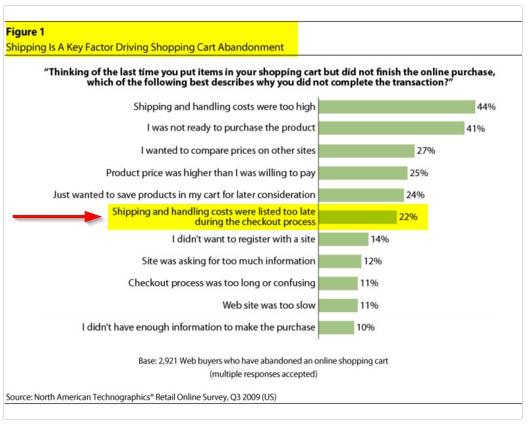
Problem: Unexpected Shipping price during checkout:
A research found that majority of the users quit the cart when they find an unexpected shipping cost during the checkout.
Solution:
1.Display the product price on the product page.
2.Show shipping cost and details on the product page
3. Best option – Provide free shipping (even if it means lowering the discount)
Problem: Shoppers add products in basket and quit just before checkout.
Reason: Shoppers want discount offers
Solution:
1.Adopt a proactive cart re-marketing strategy. Offer discounts through email notification. Make the message more personal. Woo back the customers to their carts.
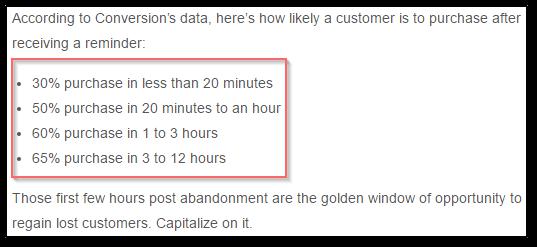
2.Use software to track likely or impending cart exits. Intervene with irresistible offer.
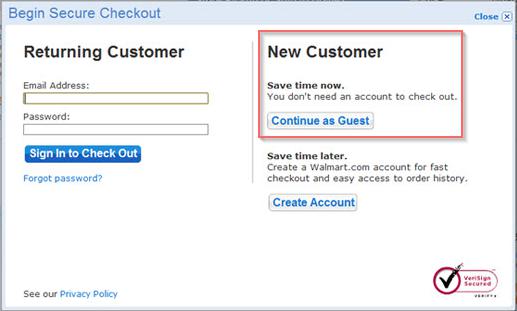
Problem: New visitors have to create a new user account before to go to the checkout page. That is very frustrating.
Solution: Provide the option “checkout as guest”
Another great tip - Add Live chat or phone to checkout page. If buyers have checkout issue they can ask you to help.
Use Olark.
You can intervene and make things easy for them. They will go ahead and buy.
In absence of such help they will definitely quit. You will lose a sale.
- Load speed: Speed it up to speed up Conversion
Poor load speed or high load time slows down checkout process.
And this single factor is the reason behind this CAR stats:
18% of shoppers abandon their cart if the pages are slow
46% of online shopper blame poor checkout speed for their not returning back to the site.
Slow checkout raises doubts in their minds like:
Will the transaction be successful?
Will they be properly billed or not double-billed?
One study found out that a 2 second delay increased the cart abandonment rate from 67% to 87%.

Problem: Slow loading time means slow checkout which in turns increase CAR%.
Solution:
1.Implement browser caching of HTTPS content. It will render pages somewhat faster
2.Remove unwanted images, JavaScript and not-necessary large files to reduce the bandwidth
3.Best option – Make checkout a one page process instead of multiple pages
See below in the screenshot. It is a fine example of “Express Checkout”.
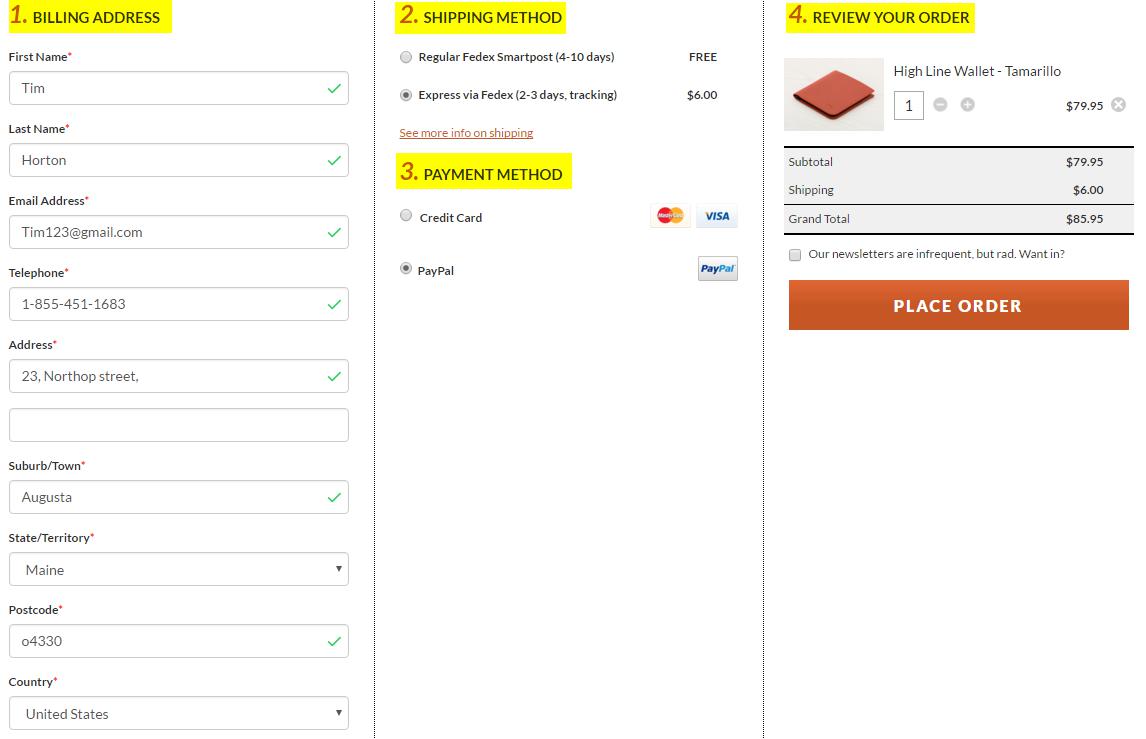
- Pop-up : Get them in the right place at right time
If you do have not mastered the art of popping up some great, time-driven offers on your e-commerce store, you better do it. Pop-ups are lead generators and sales-drivers. They also help reduce the cart abandonment rate.
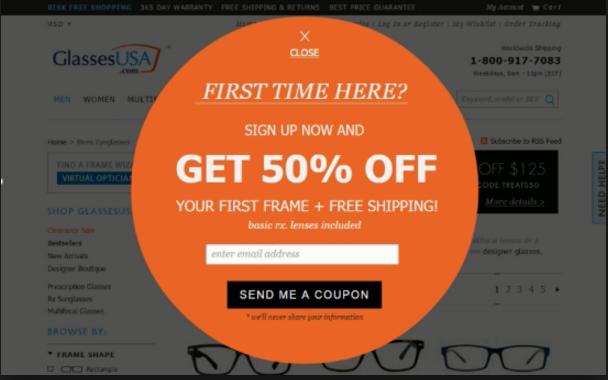
Do remember a pop-up that came up straight on your screen, the moment you were abandoning the cart?
The offer was so lucrative that you took it.
Pop-up are quite effective as a last-minute cart salvager. They have the power to stop an impending exit and convert into a sales.
Actionable Tips:
1. Immediate Discount or Coupon: An effective, last-minute offer that intervenes cart abandonment
Target audience: First-time visitors.
Location: Product pages, sign-up pages, landing pages of your e-store.
2. Time-driven pop-up that offer special rebates or discounts. A kind of urge for instant gratification. See below in the screenshot.
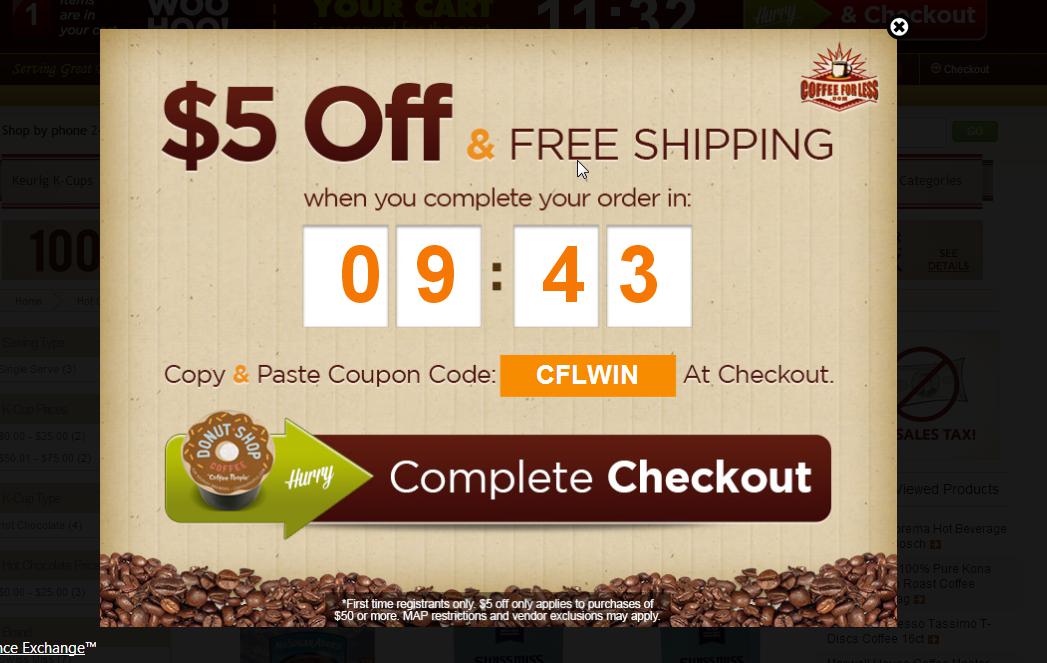
3. Special deal pop-up When you have a great product that you want to show off to your visitors.
See below how Content Marketing Guru, Neil Patel lures his visitors with special 83% discounted offer for his product – Quick Sprout Traffic U.
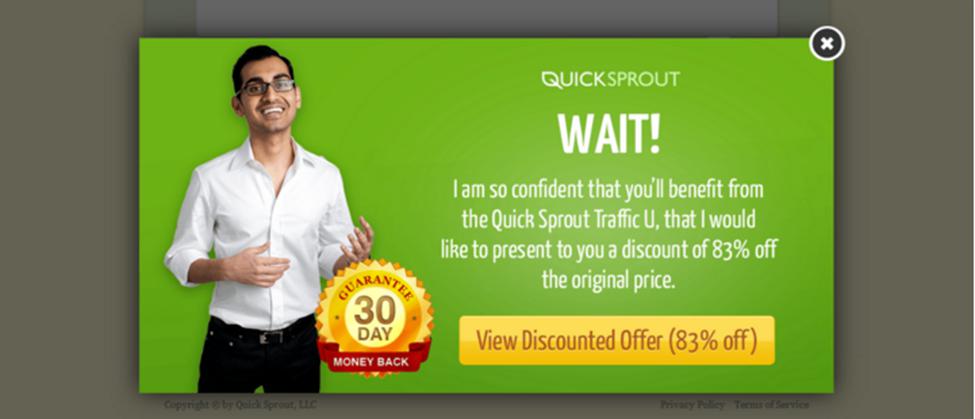
4. Sales by date Returning visitors who did not buy during their first visit and first-time visitors
Use your good intuitive sense. Track down the weekly and monthly traffic historical data. You know the best days you get maximum traffic with most numbers of new visitors.
On those days you Pop-ups the giveaway special offers and discounts.
- Product Search : Make it Super-efficient
How frequently visitors are using the search box on your store decides the search utility of your site.
In plain term it is number of visitor’s sessions of site search divided by total number of sessions. You can easily get that data from your analytics tool. But I think you might have rarely done that.
It is important because it gives you the idea how often the search box is used.
Low site search is a pointer to many problems. Like poor site usability and content, imperfect search results, small images, and un-responsive web design.
Solution: Improve site usability, make search powerful and precise, and improve product pages. Track the visitor path from the search box to product page, add cart and checkout.
Collect the data and keep improving the user experience
If the search utility is poor, definitely it will cast its shadow on the search conversion rate.
Search conversion rate is total number of successful search conversions divided total search sessions. It is the basic calculation for your e-commerce site. If your site is able to provide highly relevant results aligned to shoppers query the conversion rate is will go up.
Tips:
1. Test. Test. Test your internal searches. Check whether you get the results you want
2. Include special discounts, offers and deals in the search
3. Check images and videos.
- User Segmentation: Know Your Customer base. Tap it Perfectly

If you are new to user segmentation create a list of different types of your buyers.
If you have resellers too, then create a system that identifies the login and sends them unique prices and discounts.
This is where buyer segmentation really helps. You do not end-up shooting wrong deals or offers to wrong set of buyers.
See in the above screenshot the owner knows the segment from which the maximum revenue flows.
Create different campaigns, offers, discounts, cart-remarketing strategy for different segments of buyers. You know the most and least profitable user segments. Plan the future marketing strategies accordingly.
If you keep a regular track of the above mentioned key metrics of your store then your conversion rate will increase and so will the profitability.